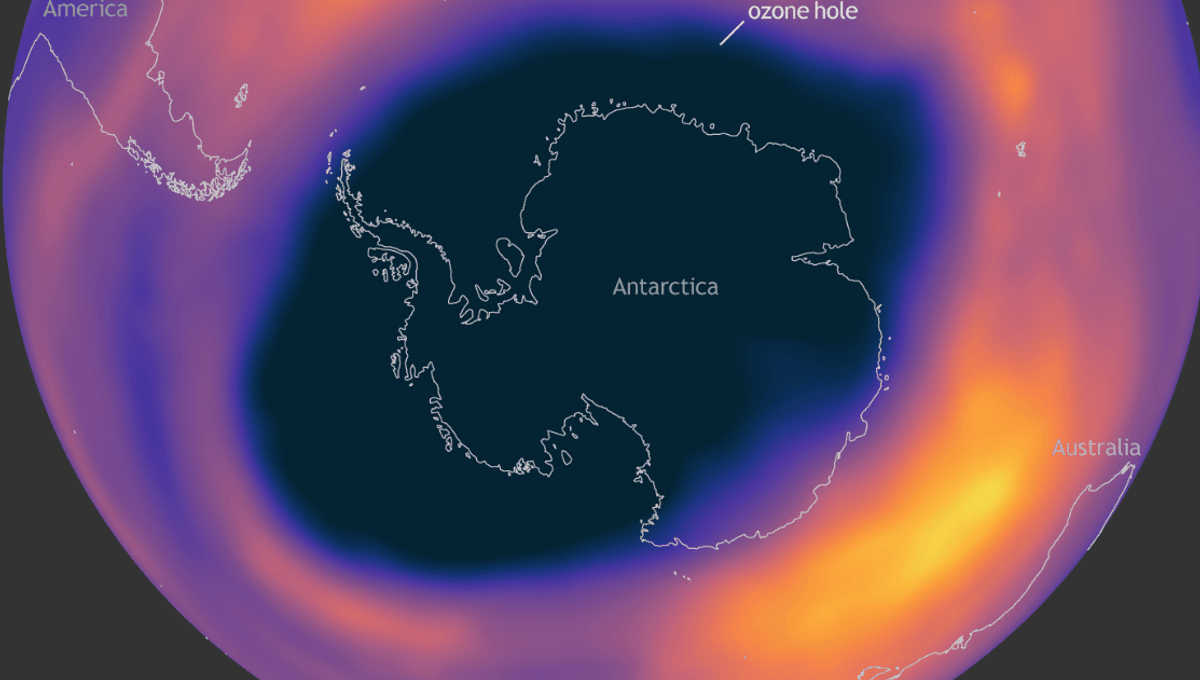
After much promise and some doubt, it’s confirmed: the hole in the ozone layer over the Antarctic is recovering thanks to the global effort to reduce ozone-depleting substances.
ADVERTISEMENT
A new study led by scientists at MIT has shown with high statistical confidence ozone recovery is going strong and its healing is the direct result of reducing ozone-depleting substances, not natural weather variability.
There have been many hints that this was the case, but this research is the first to prove it with a high degree of certainty.
“There’s been a lot of qualitative evidence showing that the Antarctic ozone hole is getting better. This is really the first study that has quantified confidence in the recovery of the ozone hole,” Susan Solomon, study author and leading atmospheric chemist at MIT, said in a statement.
“The conclusion is, with 95 percent confidence, it is recovering. Which is awesome. And it shows we can actually solve environmental problems,” she added.
The ozone layer is a region of the stratosphere between 15 and 30 kilometers (9.3 to 18.6 miles) above the Earth’s surface that has a high concentration of the gas ozone compared to other parts of the atmosphere.
By absorbing some of the Sun’s harmful ultraviolet rays, it acts as a shield for life on our planet. In the 1970s and ‘80s, it became apparent that a gaping hole in the ozone layer was being formed over Antarctica. This depletion was primarily attributed to chlorofluorocarbons (CFCs) – synthetic compounds once extensively used in aerosol sprays, solvents, and refrigerants – which, upon reaching the stratosphere, release chlorine atoms that catalyze the breakdown of ozone molecules.
ADVERTISEMENT
The ozone layer is degraded specifically over the South Pole due to the region’s extremely cold temperatures, the presence of polar stratospheric clouds, and the unique conditions of the polar vortex, which trap ozone-depleting chemicals and lead to more intense ozone depletion during the Southern Hemisphere’s spring.
Solomon, then working for the National Oceanic and Atmospheric Administration, was among the first scientists to go to Antarctica in 1986 to gather critical evidence confirming that CFCs were responsible for ozone depletion.
The evidence showed that the world needed to act – and act they did. Since 1987, 197 countries and the European Union have signed the Montreal Protocol, which saw the phase-out of ozone-depleting substances such as CFCs used in refrigerators and aerosols.
Over the past decade, there have been positive signs that the ozone hole was getting smaller each year, especially in September, the time of year when Antarctica starts to warm and the hole opens up. However, scientists were cautious to confirm their suspicions because the atmosphere has a high level of “chaotic variability”, said Solomon. This led some scientists to argue that its recovery wasn’t going as swimmingly as others hoped.
ADVERTISEMENT
With 15 years of observational data now available, the researchers are confident in affirming that the ozone layer is bouncing back. If this trend continues, they anticipate that the ozone layer over Antarctica could fully recover in approximately 10 years.
“By something like 2035, we might see a year when there’s no ozone hole depletion at all in the Antarctic. And that will be very exciting for me,” Solomon said. “And some of you will see the ozone hole go away completely in your lifetimes. And people did that.”
The new study is published in the journal Nature.
Source Link: It's Confirmed: Antarctica's Ozone Hole Is Recovering And On Track To Disappear Completely